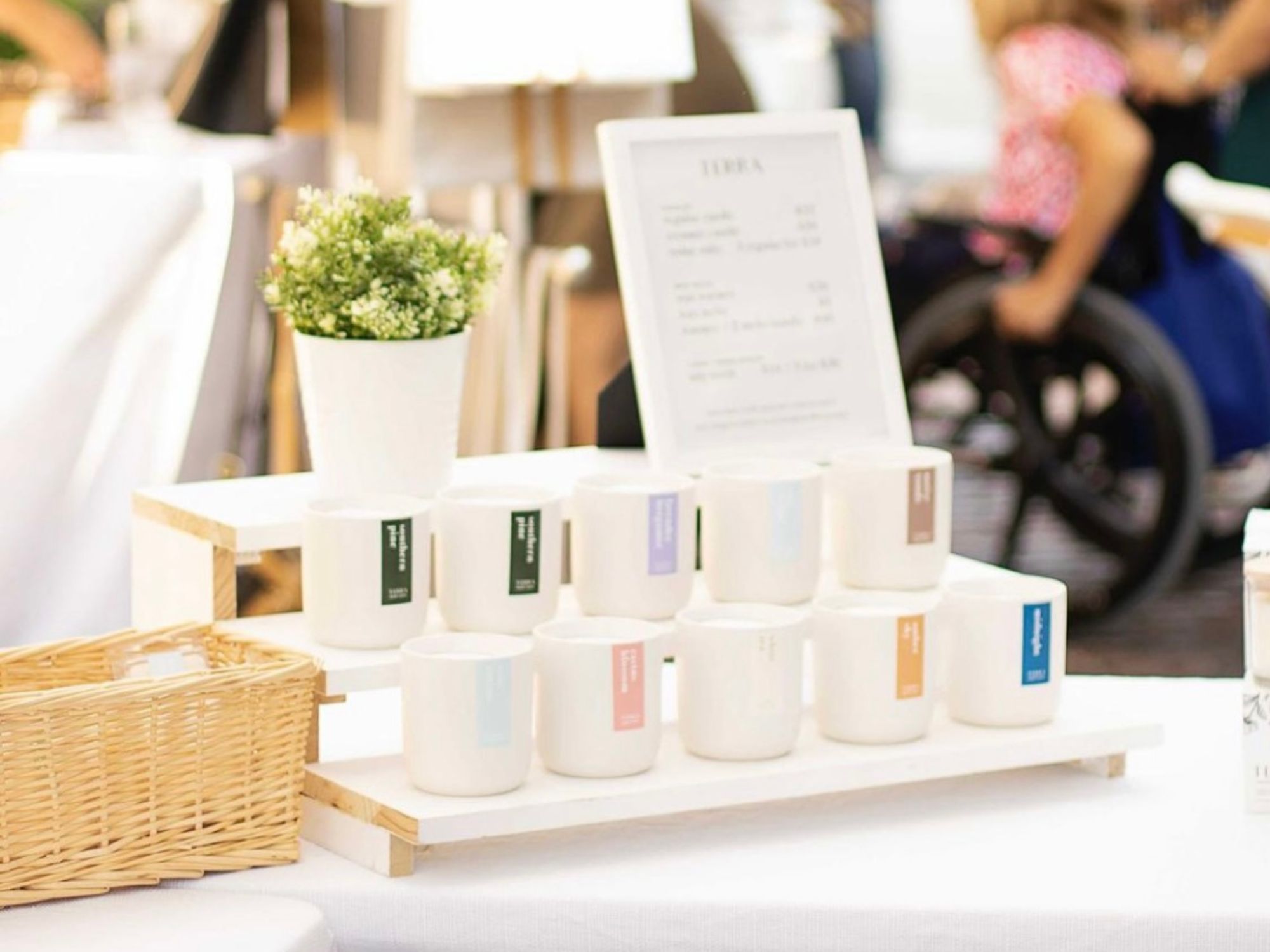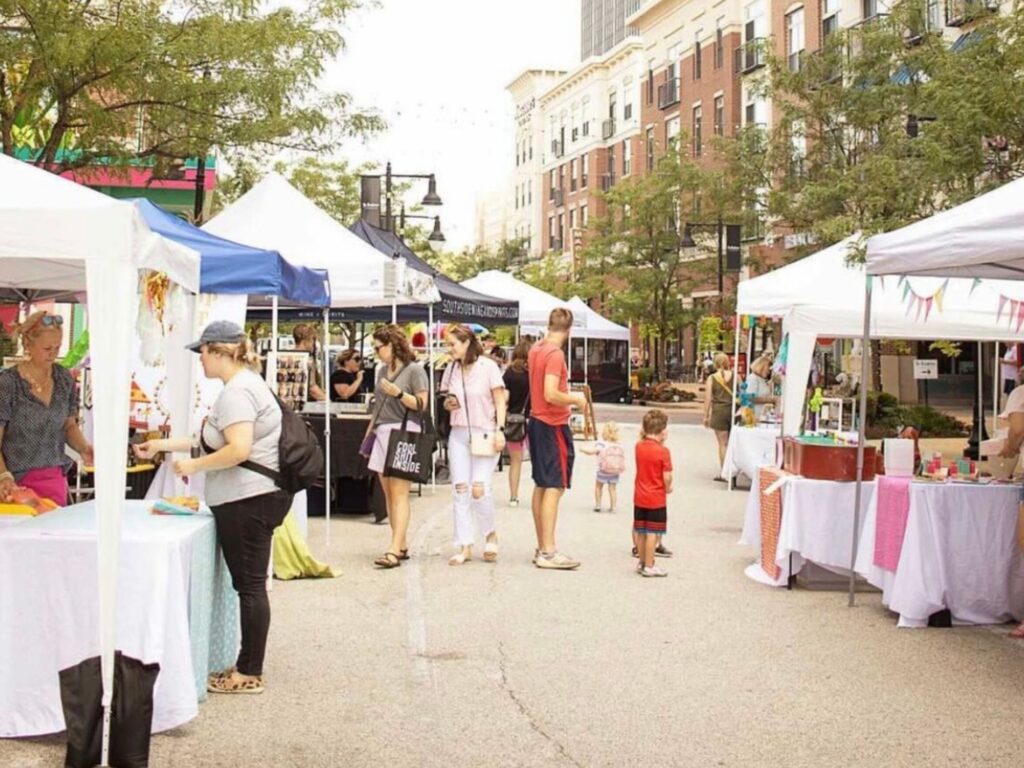
Farmer’s markets are a fantastic way for small businesses to connect with customers and build brand awareness. All while getting the chance to sell their handmade products. They provide an avenue for entrepreneurs to share their passions with like-minded individuals. They can even foster relationships with customers, and establish their presence within the local community. However, attending a farmer’s market can be a daunting experience. Especially if you’re new to the scene or haven’t seen the results you expected in the past. Therefore, it’s important to review mistakes to avoid as a farmers market vendor.
It’s essential to understand the nuances of a farmer’s market and avoid some common pitfalls that can hamper your success. In this article, we’ll discuss the top five common farmers market mistakes that vendors make. Plus, provide tips on how to optimize your chances of success. By avoiding these common mistakes, you can maximize your sales potential. Build a loyal customer base that will support your business for years to come.
Not Taking Time to Prepare

One of the biggest mistakes to avoid as a farmers market vendor is not taking the time to prepare properly. It’s easy to underestimate just how much time it takes to build up enough stock of your products. Too often, businesses rely on guesswork when it comes to predicting the number of products they’ll need. However, this approach can lead to inefficiencies and wasteful spending.
Taking the time to properly prepare for markets involves a lot of planning. You’ll need to make supply orders well in advance. This is done to ensure that you have everything you need to start production on time. You’ll also need to consider the lead time. This is so the suppliers can deliver materials or inventory you need to create your products.
Moreover, preparation involves more than just making sure you have enough stock. You’ll also need to think about the layout of your booth, your branding, pricing, and promotional materials. These factors can greatly impact the success of your booth, and they require careful planning and execution.
By taking the time to properly prepare, you’ll be able to optimize your time and money, and feel more confident and prepared when you show up to the market. Additionally, being more accurate in predicting the number of products you need can save you money in the long run by avoiding overproduction or underproduction of items.
Therefore, if you’re a vendor at a farmers market, make sure you take the time to prepare properly. It may require extra effort and planning, but it will pay off in the end when you have a successful market day and avoid wasting resources.
Offering Too Much Variety
Offering too much variety can be a mistakes to avoid as a farmers market vendor. On one hand, you want to have a diverse array of products to showcase your brand and appeal to a wide range of shoppers. However, if you offer too many options, it can become overwhelming for customers and actually deter them from making a purchase.
Not only does offering too much variety make your booth table look cluttered and disjointed, but it also makes it hard for shoppers to make a decision. They may take longer to decide or even walk away without making a purchase. This can result in a loss of sales and a negative impact on your overall experience at the market.
To avoid this mistake, it’s important to first determine your target market. Consider who your ideal customer is and what types of products they may be interested in purchasing. From there, you can narrow down your selection and choose a few key products to showcase at the market. This approach will not only make it easier for shoppers to navigate your booth but also help you to focus on what you do best and stand out among the competition.
Additionally, it’s worth researching what types of products tend to sell well at farmers markets and which are currently trending in the handmade business world. This information can help guide your product selection and ensure that you are offering items that are in high demand among market-goers.
In conclusion, offering too much variety can be a costly mistake for vendors at farmers markets. By narrowing down your selection and focusing on your target market, you can create a more streamlined and successful booth that appeals to shoppers and drives sales.
Weak Table Display
The key to attracting customers to your booth is by showcasing your products the best way possible. Let your display do some of the selling for you. The majority of your time and focus will go into making enough products for the event, but your booth setup deserves just as much thought and effort as your products. If your booth doesn’t catch shoppers’ attention and draw them over, you won’t even have a chance to sell all the products you’ve made.
When your ideal customer walks into your booth, you want them to notice you immediately. This can be achieved through the use of color in your space and products, the font in your signage, your display fixtures and props, and the image you project. Not including this is one of the biggest mistakes to avoid as a farmers market vendor.
Keep in mind that if you don’t put effort into your display, it can actually devalue your products. Make sure each element surrounding your products in your craft show booth adds to their value, not detract from it. From your tablecloth to your price tags, no detail is too small to put effort into. An idea to do this is to use stands, different heights of blocks under the table cover, upright display items, and boxes to make your stall more 3-dimensional and give yourself more space to spread your products out nicely and really show them off better. You need your space to be shoppable and encourage people to pick up items.
Not Displaying Your Prices

Farmers markets can be a great opportunity for vendors to sell their goods and connect with their customers. However, there are some common mistakes that vendors make that can hurt their sales and customer satisfaction. One of these mistakes is not providing clear and visible pricing for their products.
Customers want to be able to budget their market trips without feeling pressured to purchase. If they have to ask for the price of an item, it can create unnecessary discomfort and pressure. To avoid this, vendors should make sure that all of their items have clear price tags or signs that are easy to see and read. It’s also important to place the prices close to the product, so customers can easily identify the price without having to touch the item.
Offering a range of price points can also be beneficial. This not only appeals to a range of budgets, but also encourages customers to buy more items. When vendors have products that come in different sizes or colors, customers are more likely to add additional items to their purchase, which can increase the vendor’s units per transaction and boost overall maximizing sales at farmer’s markets for your business.
Vendors should also consider stocking up on low and mid-priced products to appeal to customers who are being introduced to their business for the first time. This can help create a positive first impression and encourage customers to come back in the future. High-priced items should be used as showstoppers and displayed prominently at eye level in a spot that catches the customer’s attention.
Not Posting Where to Find You
One of the most common mistakes to avoid as a farmers market vendor is leaving customers without knowing where to find them after the show. This can be detrimental to the success of your business because the majority of craft show shoppers won’t buy from you. In fact, the average conversion rate for a brick-and-mortar store is 20% – 30%, and online conversion rates are even lower at 2% – 3% due to the endless options available online.
While your conversion rate for markets will vary depending on factors like the type of event, what you’re selling, and the time of year, it’s likely that the conversion rate at a craft show falls somewhere between brick-and-mortar and online averages.
Assuming the average craft show booth conversion rate is around 10%, this means that 90% of shoppers won’t buy from you. However, there is a high possibility that they would be interested in buying your products after the event. To make this happen, it’s important to make your booth memorable and leave a great first impression. You should also give customers a way to contact you after the event.
One way to do this is to have business cards on hand. But even better, you can get shoppers to sign up for your newsletter to stay connected with them after the event. This way, you can keep them informed about new products, promotions, and upcoming events. By doing this, you can turn a one-time shopper into a repeat customer and grow your business in the long run.
Bonus Tip: Boosting Your Sales at Farmers Markets

One of the most effective ways for handmade business owners to attract new customers at farmers markets is by offering small freebies or discount codes. This strategy not only helps to increase sales for selling at farmers markets, but it can also leave a positive impression on potential customers, encouraging them to become loyal patrons.
By providing a free sample or gift with purchase, customers are given the chance to try your products and gain a deeper understanding of what your brand offers. Additionally, offering a discount code for their next purchase can entice them to return and become repeat customers.
To further increase the effectiveness of this strategy, it’s important to promote your discounts and freebies on social media channels before the market. This can help build anticipation and attract new customers to your booth. Remember, each customer gained at a farmers market presents an opportunity to grow your brand and expand your business.
Bottom Line
Unfortunately, many vendors make common mistakes that can hinder their success. By analyzing and avoiding these mistakes, you can increase your chances of reaching your goals.
Don’t let these mishaps hold you back from achieving success at the farmer’s market. Take the time to prepare for your next event and implement strategies to address these common mistakes. By doing so, you’ll increase your chances of making a lasting impression on customers and building a loyal customer base.
In conclusion, being a vendor at a farmer’s market is a crucial step for every handmade business. With the right approach and a bit of effort, you can stand out from the competition and achieve your goals. By avoiding these mistakes to avoid as a farmers market vendor, and implementing effective strategies, you’ll be well on your way to success.
At Inventora, we are committed to helping handmade businesses succeed in every aspect of their operations, from product development to marketing and sales. Our newsletter is just one of the resources we offer to support your growth and success.
By signing up for our newsletter, you’ll receive helpful tips. Plus get access to advice on everything from vendor strategies to small business management. As well as updates on our inventory management software that can help you streamline your processes and grow your business.
With Inventora by your side, you can confidently tackle the challenges of selling at farmers markets and beyond. Knowing that you have the tools and support you need to succeed. Sign up for Inventora’s newsletter below and begin your streamlined business journey!


